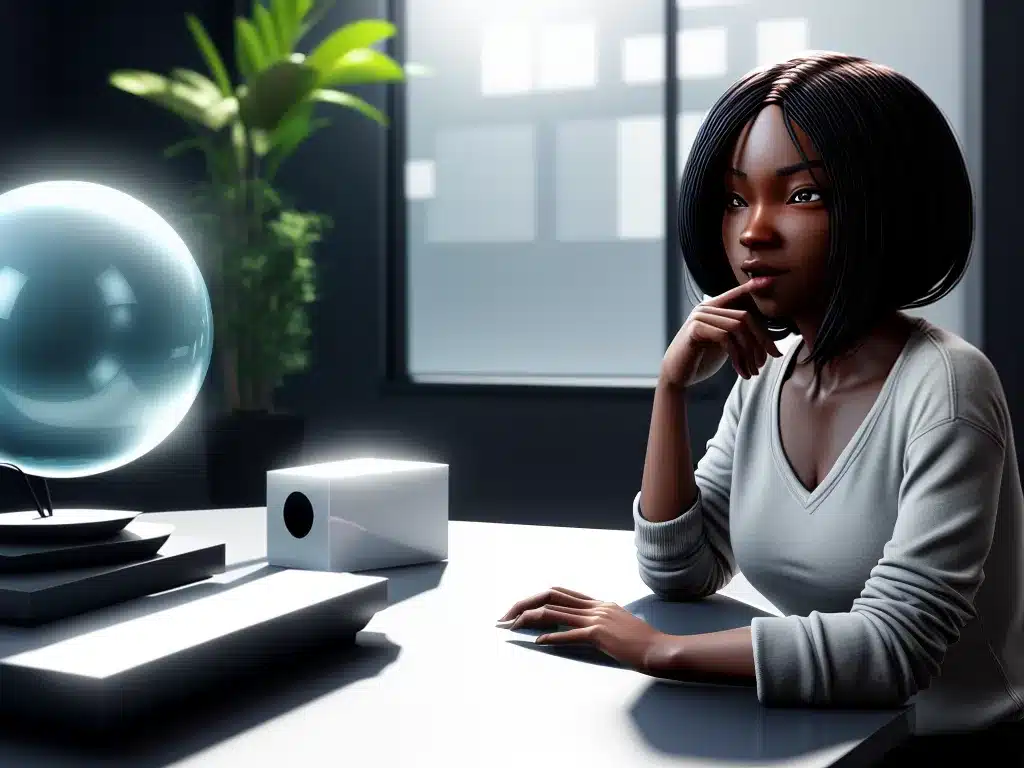
What is Ray Tracing?
Ray tracing is a rendering technique that produces highly realistic lighting effects in 3D computer graphics. It simulates the physical behavior of light by tracing the path of light rays as they interact with objects in a scene.
Here’s a quick overview of how ray tracing works:
- Rays are emitted from the camera into the 3D scene. Each ray represents a path that a light particle could take.
- When a ray hits an object, several things can happen:
- It can be absorbed by the object.
- It can bounce off the object and continue in a new direction (reflection).
- It can enter the object, bounce around inside, and exit in a new direction (refraction).
- The rays are traced recursively, simulating reflections, refractions, shadows, etc until they finally hit a light source or leave the scene.
- The light rays are sampled, colored, and combined to calculate the final pixel color. Ray tracing simulates all the physical interactions of light in a scene.
So in summary, ray tracing tries to simulate the full physical behavior of light by shooting rays and tracing what happens to them. This leads to very realistic lighting and shadows.
Why Ray Tracing is a Game Changer
Ray tracing has been used for decades in films and animations to achieve photorealistic graphics. But real-time ray tracing in games was not possible until recently due to hardware limitations.
Here are some reasons why real-time ray tracing is a game changer:
1. Incredibly Realistic Lighting and Shadows
Ray tracing calculates lighting, shadows, reflections and refractions much more accurately than previous techniques like rasterization. This leads to far more realistic imagery with proper shadows, indirect lighting, ambient occlusion, global illumination and other optical effects.
For example, ray traced shadows have smooth gradients and precisely match the shapes of objects. Rasterized shadows appear more jagged and low resolution.
2. Improved Immersion
The enhanced realism from ray tracing increases immersion in games. Light behaves as it does in real life, making game worlds more believable. Ray tracing also enables new graphical effects like accurate reflections that weren’t possible before.
3. More Directability for Game Developers
With ray tracing, light sources and materials can be controlled more directly to achieve a desired look. Developers have more control over the lighting instead of relying on “faked” or pre-baked effects.
4. Unified Lighting Workflow
Ray tracing provides a unified workflow for different lighting effects. Previously, many effects like shadows, global illumination and reflections had different development pipelines. With ray tracing, the entire lighting simulation happens automatically.
5. Extra Realism for Free
Ray tracing gets a lot of realism “for free” by simulating light physics. Previously, considerable artist effort was required to manually approximate complex lighting. Ray tracing calculates realistic lighting with less artist input.
6. More Immersive Audio
Ray tracing can also be used for spatial audio effects, accurately simulating how sounds interact with the environment. This makes for more immersive audio that changes realistically as the player moves.
How Ray Tracing is Implemented in Games
There are two main approaches to implementing ray tracing in games:
-
Full Ray Tracing – All lighting and shading is handled by ray tracing. This provides the highest quality but is computationally intensive.
-
Hybrid Ray Tracing – Only some effects like shadows or reflections are ray traced. The rest uses traditional rasterization. This is less demanding and allows ray tracing to be used on more hardware.
Nvidia and Microsoft have developed platform level support for real-time ray tracing on modern GPUs.
Some key capabilities are:
- DirectX Raytracing (DXR) – An extension to DirectX 12 that supports ray tracing acceleration on GPUs.
- Nvidia RTX – Specialized ray tracing cores built into new Nvidia RTX GPUs.
- AMD Radeon Rays – AMD’s cross platform ray tracing library.
Top game engines like Unity, Unreal Engine, and Frostbite have also added ray tracing support.
So the ecosystem is now in place for game developers to add ray traced effects to their games. Initially it will be used for some effects like shadows and reflections. But over time, fully ray traced games will become possible.
The Future of Ray Tracing
Ray tracing is still in the early adoption phase in games. Here are some predictions for the future:
-
Hybrid Approaches – Most games will use a hybrid of ray tracing with rasterization for the near future. Full ray tracing is still too demanding.
-
AI Acceleration – AI techniques like Nvidia DLSS can help boost ray tracing performance using deep learning. This expands the viable hardware.
-
New Effects – Ray traced effects will become more complex over time. Dynamics like explosions, breaking objects, fluids, etc will get realistic ray traced simulations.
-
Fully Ray Traced Games – In 5-10 years, fully ray traced games could become practical as hardware keeps improving. Rasterization will gradually be phased out.
-
Cloud Rendering – Cloud gaming services could run graphically intensive ray tracing in the cloud, allowing devices like mobile phones to get ray traced graphics by streaming video.
So in summary, ray tracing is poised to become the next major evolution in real-time graphics. It brings far more realistic and immersive environments to games. While still early, ray tracing is the future of gaming graphics.












